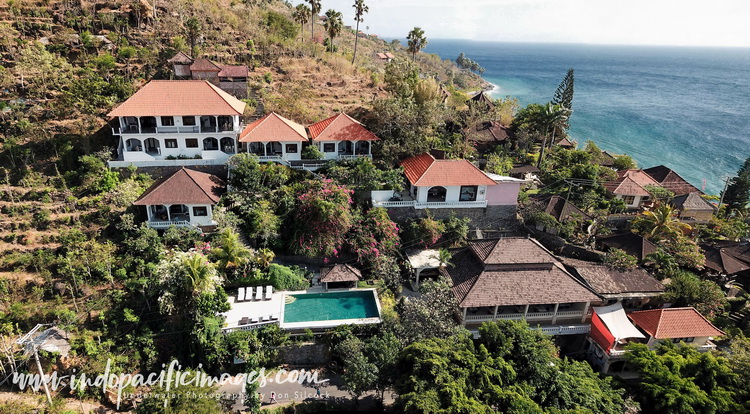The Japanese wreck in Bali plays second fiddle to the very well-known Liberty wreck in nearby Tulamben. But this quite small and interesting wreck really deserves your attention if you are diving the general area of Bali known as Amed.
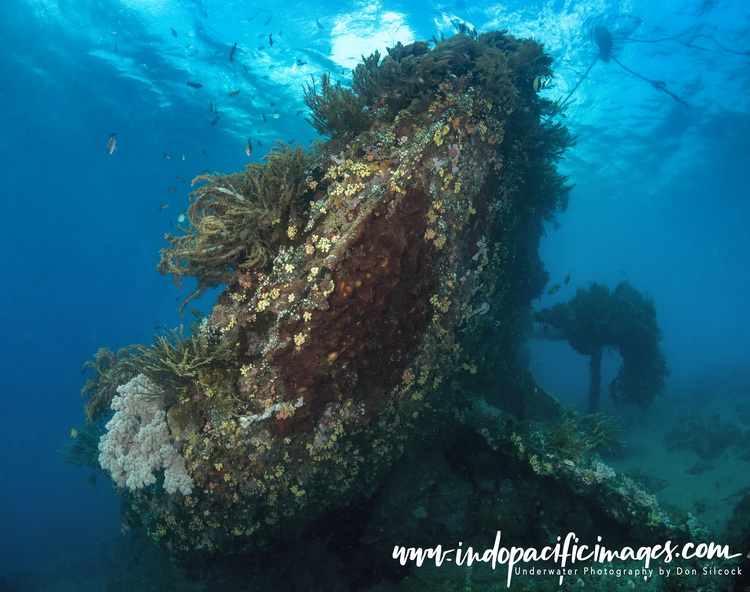
Most divers visiting Bali travel up to Tulamben to dive the Liberty wreck and the nearby sites in Tulamben Bay. But most move on after a few days as there is not much else to do in Tulamben apart from scuba diving.
Whereas nearby Amed offers an interesting mix of diving and a laid-back ambiance. Over the last 10 years or so Amed has been transformed from a series of sleepy sea-side villages to somewhat of a new-age kind of a place.
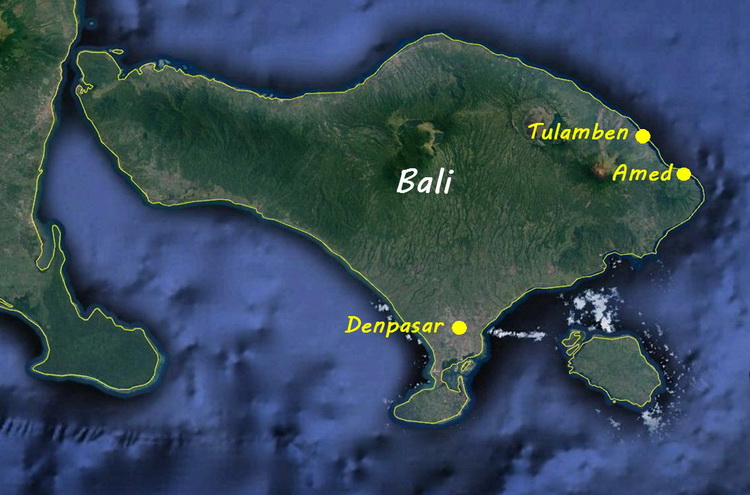
Diving is by far the main game, but there are now several free-diving businesses. Along with yoga studios and lots of small but nice places to eat.
Check out the Wickivoyages guide for more information on Amed
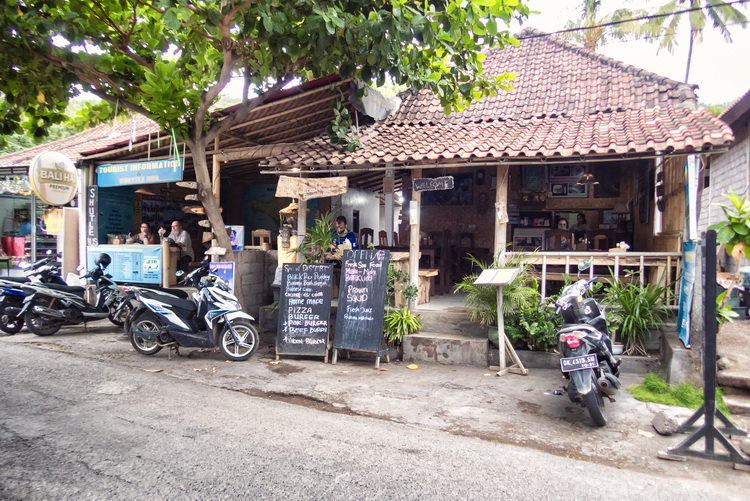
The Japanese Wreck – Where Is It?
The wreck is located in Banyuning Bay close to the small village of the same name on the eastern tip of Bali. Banyuning is just one of the seven villages along the 8km long strip of coastline that is referred to as “Amed”.
And to further confuse matters, one of those seven villages is also called Amed. So, there is Amed the area and… Amed the village in the Amed area!
The wreck is literally just off the beach in Banyuning Bay, making it easy to snorkel on. Which has made it quite popular with tourists.
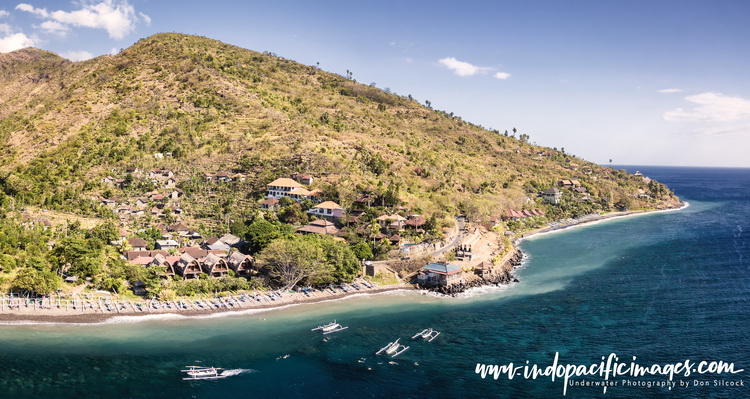
Snorkelers and their boats around the Japanese Wreck in Banyuning Bay
The local villagers have capitalized on that and have established a car park for tourists to use. But you will have to pay a small fee for the privilege and access to the beach.
Down on the beach there is a shaded area together with a cafe and a place to hire snorkeling gear.
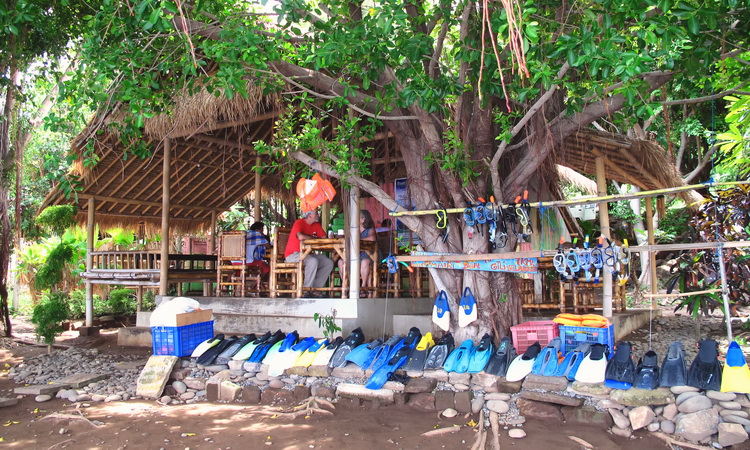
The History…
Very little is actually known about the Japanese Wreck in Bali or how it ended up underwater at Banyuning. In-fact, it is not even clear that it is actually Japanese.
It got its name because of the nearly intact toilet on the wreck. Which, people knowledgeable in these matters, have identified as typical of those used on Japanese ships…
Whether that is actually true, or made up over a few Bintangs, is impossible to say!
Diving The Japanese Wreck
Diving the Japanese Wreck in Bali is very easy. The hardest part being the entry and exit on the black pebbles of the beach at Banyuning Bay. Which, if there is swell, can be a bit challenging.
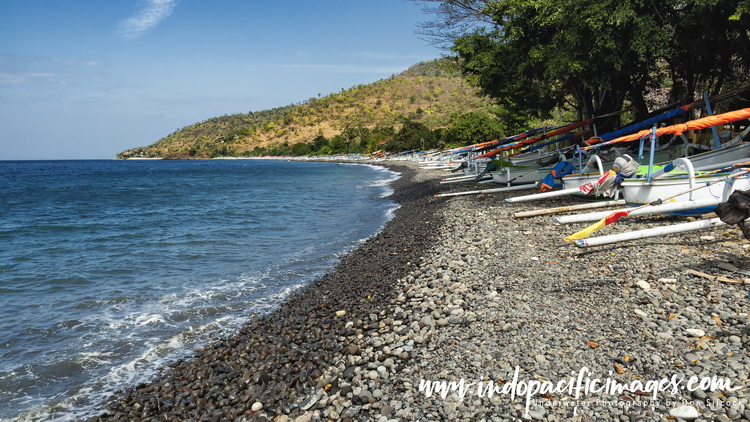
But once in the water, it’s a short surface swim to the buoy marking the wreck.
The wreck itself is fairly small and looks like it used to be a tug. But it is quite hard to tell now that it is on its side and partially broken up.
The depth on the wreck varies from just 6m, down to about 12m. It lays on silty sand that can easily be stirred up by too many divers or a change in the prevailing currents. But overall the wreck itself is a very easy and safe dive.
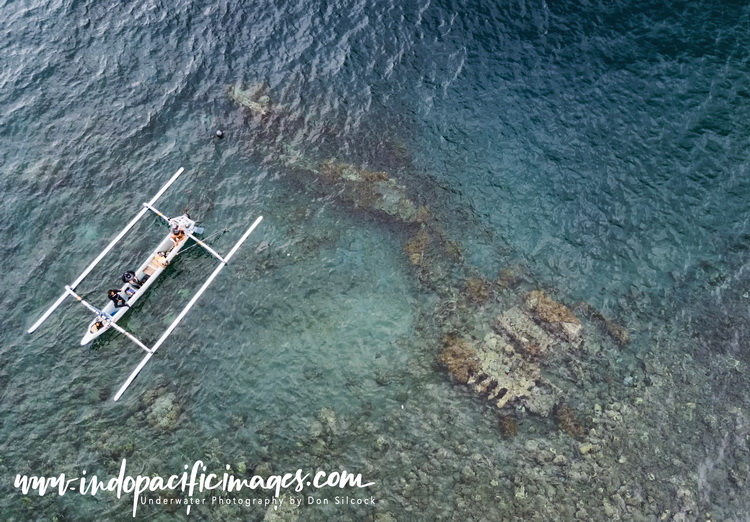
The wreck now sports a fine array of large gorgonian fans, sponges and general marine life. With the area around the stern particularly vibrant.
Quite how the wreck ended up on the beach at Banyuning would certainly be an interesting story because the condition of the wreck, with its large marine diesel engine sat bolt upright in the deeper water and surrounded by crankshafts and other engine room debris, points to quite a violent end to its life afloat.
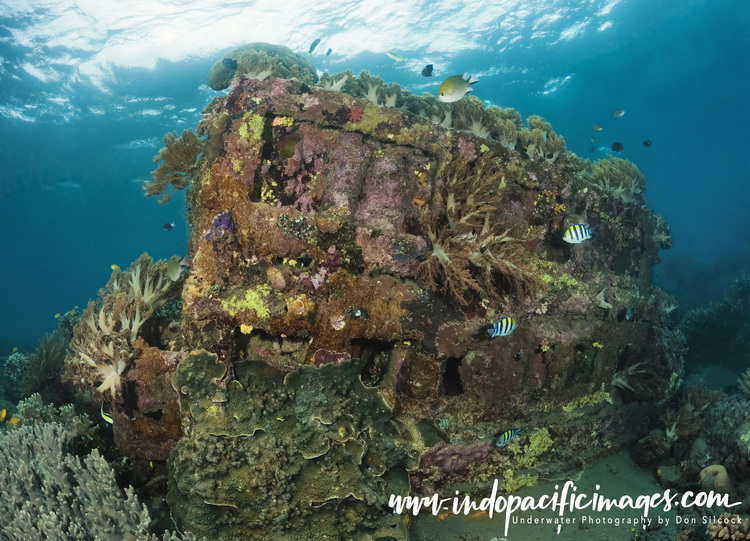
Diving The Japanese Wreck – To the Right…
The wreck is not the only attraction in Banyuning Bay. The general area is well worth exploring and there are many other things to see.
With the wreck behind you, there are two basic choices – go to the right or go to the left. Heading straight out is not an option as it will take you in to the depths and there is not much to see.
Going right takes you north and along a sloping sandy bank for about 60m or so. There you will find some bommies in about 12m of water.
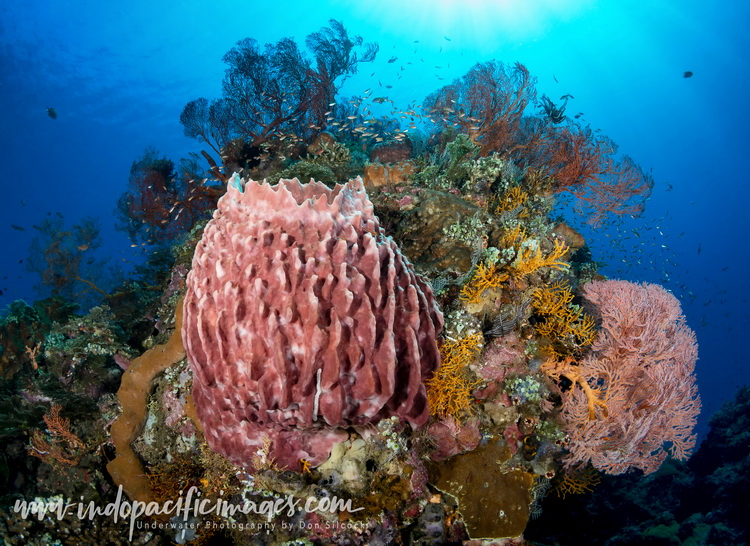
The bommies are an incredible testament to the rich waters of the Indonesian Throughflow that flows down the north-east coast of Bali. Eddies from that flow swirl around Banyuning Bay creating small, but complete, ecosystems like the bommies and the Japanese wreck

Rich with healthy hard and soft corals, barrel sponges and sea fans. The bommies are simply a delight to explore and photograph. Every square inch of the rock structure seems to have been colonized by marine life!
Diving The Japanese Wreck – To the Left…
Heading left from the wreck will take you east around a headland and along the coastline. This is a really interesting dive as it is almost two dives in one.
From about 12m down to around 30m there is an excellent variety of the smaller side of life. Ranging from pygmy seahorses on several sea fans, to gobies and nudi’s.
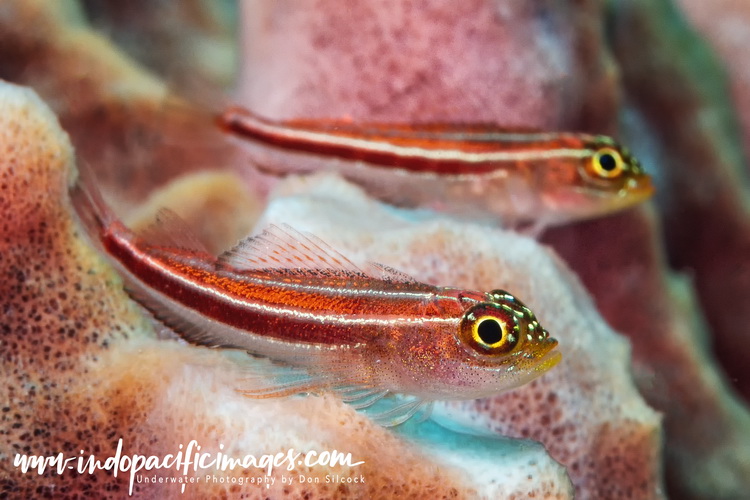
Some care needs to be taken on this part of the dive, because of the depth. Particularly if you get sucked in to the time-sink of trying to get the definitive pygmy seahorse image…
The return journey to the Japanese wreck is, for me… the best part of the overall dive. Because from about 12m there is a shelf that runs up the beach. And, along that shelf those rich waters of the Throughflow have created some of the most amazing bio-diversity.

Huge sea fans filter the water flow, while beautiful soft corals flourish and incredible hard coral patched flourish. In and around all this marine infrastructure and huge schools of colorful anthias darting in and out.
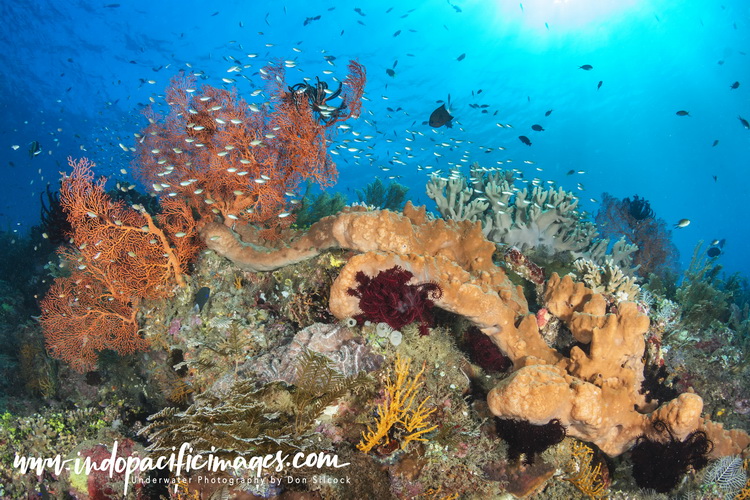
On a clear sunny day this part of the dive is my idea of underwater heaven. Sun rays stream down creating cathedral lighting and the whole place seems to radiate with healthy marine life.
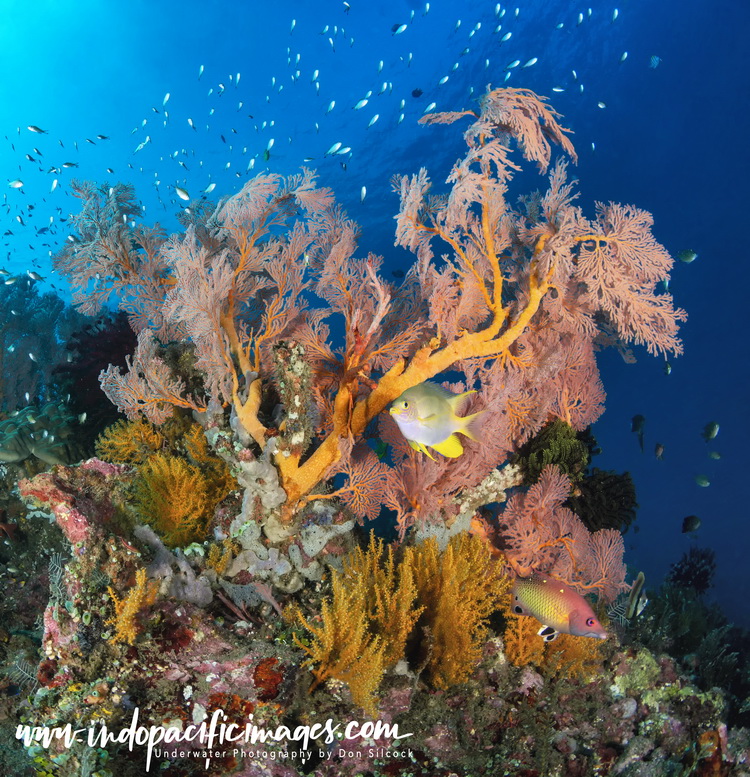
When to dive it?
The Japanese Wreck in Bali can be dived virtually all year round because of its fairly sheltered location. But will definitely be at its best during the dry monsoonal season between April and November.
The silty bottom and the shallow depth of the wreck means that choppy seas will quickly degrade the underwater visibility and really spoil the dive…
The wreck offers a great location for photographers and you will need a fish-eye lens to do the site justice… But don’t forget your macro lenses as well as there are a lot of small stuff to see!
For wide-angle photography it is best to dive early in the morning or later in the afternoon. So as to avoid the harsh overhead sun during mid-day which is an issue because of the shallow depth.
Logistics…
There is so much to see and photograph on the Japanese wreck that I usually dedicate a couple of days to it. That way I can really make the most of the changing light during the day.
When I do that I stay right across the road from the wreck at Baliku Dive Resort as the guides there know the wreck and surrounding area extremely well!
